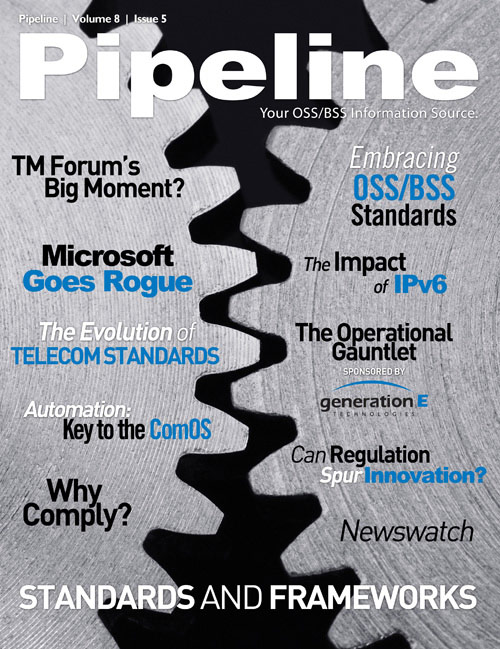By: Sanjay Mewada

The pressure for OSS/BSS suppliers to embrace standards has increased as a result of a collective desire on the part of Communications Service Providers (CSPs) to offer more value-added services to a diverse set of industry verticals such as mobile commerce, banking, transportation, and retail. This is the next step in the communications IT evolution from a predominantly bespoke, or custom, software industry; through the COTS, best-of-breed and best-of-suite eras; to a period of predictability and interchangeability where implementation risk and complexity are minimized and where vertical-specific variants of enterprise-grade solutions can be extended to major end users.
Though new to the communications software world, the idea of building multiple product variants off common platforms is not new. Many manufacturing industries, such as commercial aircraft and automobiles, have used this model to great success for many years. In the communications industry itself, the network side has done much better with standardization than IT and operations.
Examples of using standardization to drive down cost and build interoperability are numerous. Starting in the 80’s the use of SDH/SONET as the standardized transport protocol created a foundation for the layering of newer technologies from ATM to Ethernet, to benefit both service providers and users. It also provided vendors with standards they could build to in order to reduce cost and enable interoperability.
Consider GSM as another example. One can definitely make the case that mobile adoption in many parts of the world would not have been as rapid without the GSM standards. The GSM Association estimates that technologies defined in the GSM standards serve 80% of the world's population, encompassing more than 5 billion people in more than 212 countries and territories, making GSM the most ubiquitous of the many standards for cellular networks. With increases in data traffic and packet data, the standard has evolved to accommodate 3G and, ultimately, 4G.


Unlike in the hardware domain, however, defining protocols is not enough to create standardized processes and data models in BSS/OSS. The principles, nevertheless, remain relevant because standardized components, processes, and platforms enable suppliers to create efficiency and predictability in their manufacturing processes, supply chains, and quality without sacrificing much, if anything, in the way of innovation, variation, or personalization. With standardization, CSPs can reap enormous advantages as they deliver a variety of similar services to enterprises that span many industry verticals. They will struggle to realize these benefits, however, if the IT solutions they leverage do not embrace and conform to a range of standards.
The New Business Case for Standardization
Standards and guidelines like TM Forum’s Frameworx, which includes the Business Process (eTOM) and Information (SID) Frameworks, and Carnegie Mellon University’s Software Engineering Institute’s Capability Maturity Model Integration (CMMI), originally emerged to help drag software development out of the realm of what seemed like black magic, into the more predictable light of proper engineering.
Martin Creaner, TM Forum President and CEO, comments on the value of standards like Frameworx: “Being a service provider today isn’t easy: market saturation and convergence are driving extreme competition, while customers constantly expect more for less. Delivering the right level of service, at the right price — and making a return for your shareholders — is a tall order. As a result, established standards such as TM Forum’s Frameworx enable the development of innovative services and partnerships that ultimately allow businesses to operate with a new level of agility, simplicity, and efficiency.”










